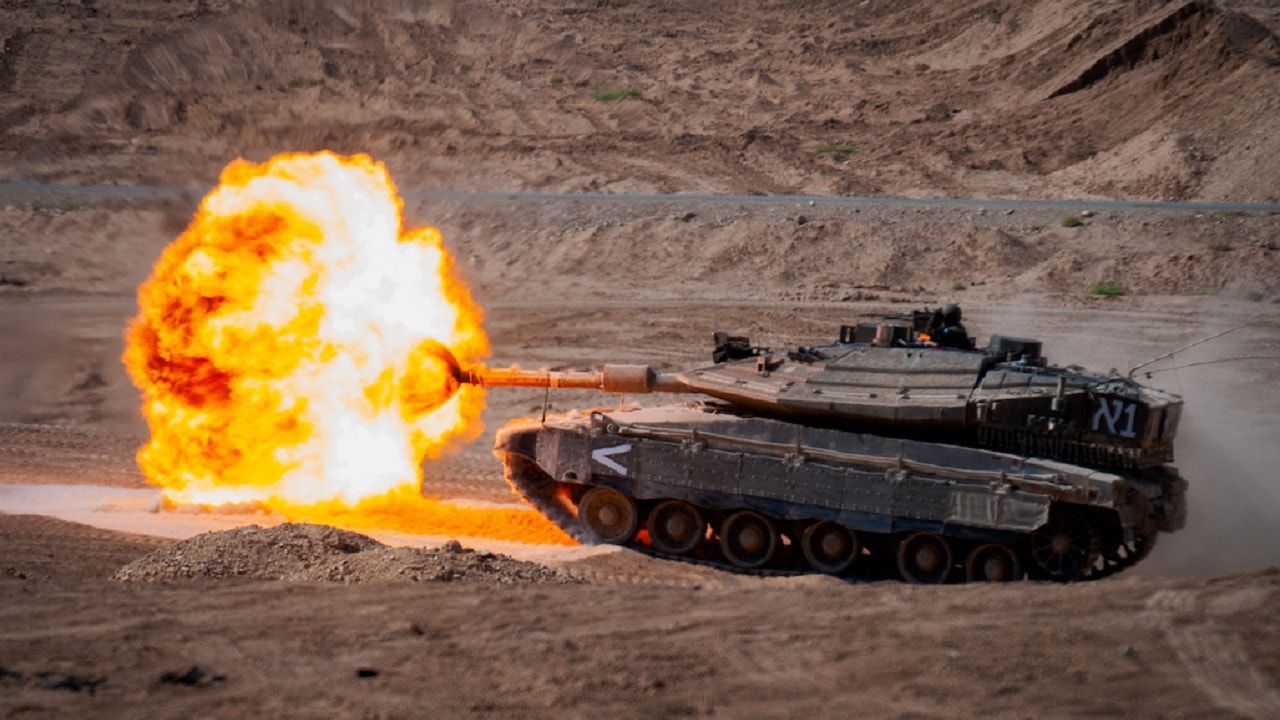The Israeli Defense Force’s (IDF’s) Merkava IV is considered one of the absolute best main battle tanks (MBTs) in the world. It is also exclusively used by the IDF, as the government in Jerusalem has rejected nearly all export requests. In fact, only a single Merkava MkI was even allowed to leave the country – heading to Amman, Jordan in 2018, to be added to that Middle Eastern nation’s Royal Tank Museum.
Last month, however, the IDF finally agreed to export the Merkava IV to the Philippines. In this case, it isn’t actually the MBT model, but rather the Armored Vehicle-Launched Bridge (AVLB), which is based on the Mk IV tank chassis. Two of the variants were sent in July and had arrived at the port of Batangas. It marks the first time that any version of the Merkava tank has been exported to a country outside of Israel.
“Two armored vehicle-launched bridge units for the Army’s engineer combat battalions are due for post-delivery technical inspection after they were shipped to the Batangas Port, Batangas City on July 12, 2022,” the Twitter account for the Philippine Army announced last month.
Two armored vehicle-launched bridge units for the Army’s engineer combat battalions are due for post-delivery technical inspection after they were shipped to the Batangas Port, Batangas City on July 12, 2022.
Read here: https://t.co/RrEEWgTGmJ pic.twitter.com/3Qg6RCGZ2G
— Philippine Army (@yourphilarmy) July 14, 2022
“The assets will boost the capabilities of Army engineer combat battalions in supporting maneuver units by providing mobility during operations,” said Philippine Army spokesperson Col. Xeres Trinidad.
Before deployment, the newly-delivered AVLBs will undergo a post-delivery technical inspection by the Department of National Defense.
More Merkavas on the Way?
Even as the ink on this deal has barely dried, there are reports that the sale of the AVLB variant of the Merkava IV could open the door for the sale of the actual MBT. At issue is whether the Merkava IV, at 65 tonnes, is best suited to the terrain of the Philippines. It was designed largely for use in a Mediterranean/desert climate, rather than the humid jungles of Maritime Southeast Asia.
In fact, the Philippine Army is already looking at smaller and lighter platforms, and the delivery of the bridge laying tanks is part of the Philippine military’s Horizon Two modernization program, which also included the adoption of the Sabrah Light Tank, a 30-tonne variant of the Austrian Pandur II built by the Israeli-based Elbit Systems.
These vehicles have been described as a potential game-changer for the Philippines, which has sought to modernize its armor.
“These past 125 years, we have seen the Philippine Army grow into a professional and capable Army for our country,” said Army commander Lt. Gen. Romeo S. Brawner Jr. said. “And as the Army’s modernization program progresses, we are looking at a very bright future for our land force.”

Merkava Tank
Last year, Israel Ambassador to the Philippines Ilan Fluss said that Israel would help modernize the Philippines Armed Forces by providing military technology and other systems. The two countries now maintain close security ties, and Israel has sold a large amount of weaponry to the Philippine army over the years. As tensions in the South China Sea have increased, the overall flow of arms to the region has spiked.
Even as China has become increasingly aggressive, Beijing would face considerable difficulties in invading the Philippines, which could soon have some of the best tanks in the region.
Expert Biography: A Senior Editor for 1945, Peter Suciu is a Michigan-based writer who has contributed to more than four dozen magazines, newspapers, and websites with over 3,000 published pieces over a twenty-year career in journalism. He regularly writes about military hardware, firearms history, cybersecurity, and international affairs. Peter is also a Contributing Writer for Forbes. You can follow him on Twitter: @PeterSuciu.

